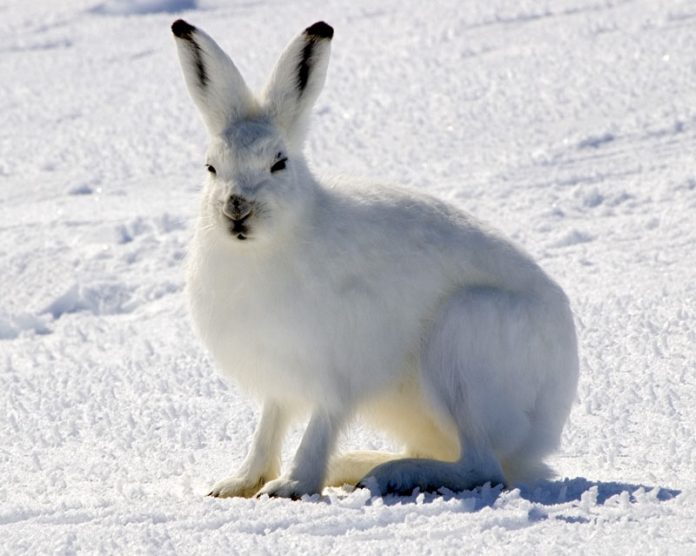“It’s weird seeing a bunny … just kind of getting its head right into the side carcass of another rabbit and consuming meat,” said Michael Peers, who wrote the paper. “It’s kind of, I guess, not what you’d expect.”
Peers, a PhD candidate at the University of Alberta, is studying how changes in the environment may affect snowshoe hare survival. He discovered the carnivorous hares after setting up wildlife cameras on animal carcasses as a side project to his main research.
While it’s already known in the scientific community that some herbivores occasionally indulge in meat-eating, what surprised Peers was that the hares scavenged “quite frequently and for long periods of time.”
Hares scavenged 20 of the 161 carcasses the researchers deployed for the study and some of the hares appeared to defend carcasses from other hares.
There were two other discoveries that shocked Peers. He captured two different hares eating grouse feathers over a several-day period. He thinks his photos are the first documented occurrence of this behaviour.
Peers said it was also surprising to see hares munching on lynx, their main predator.













